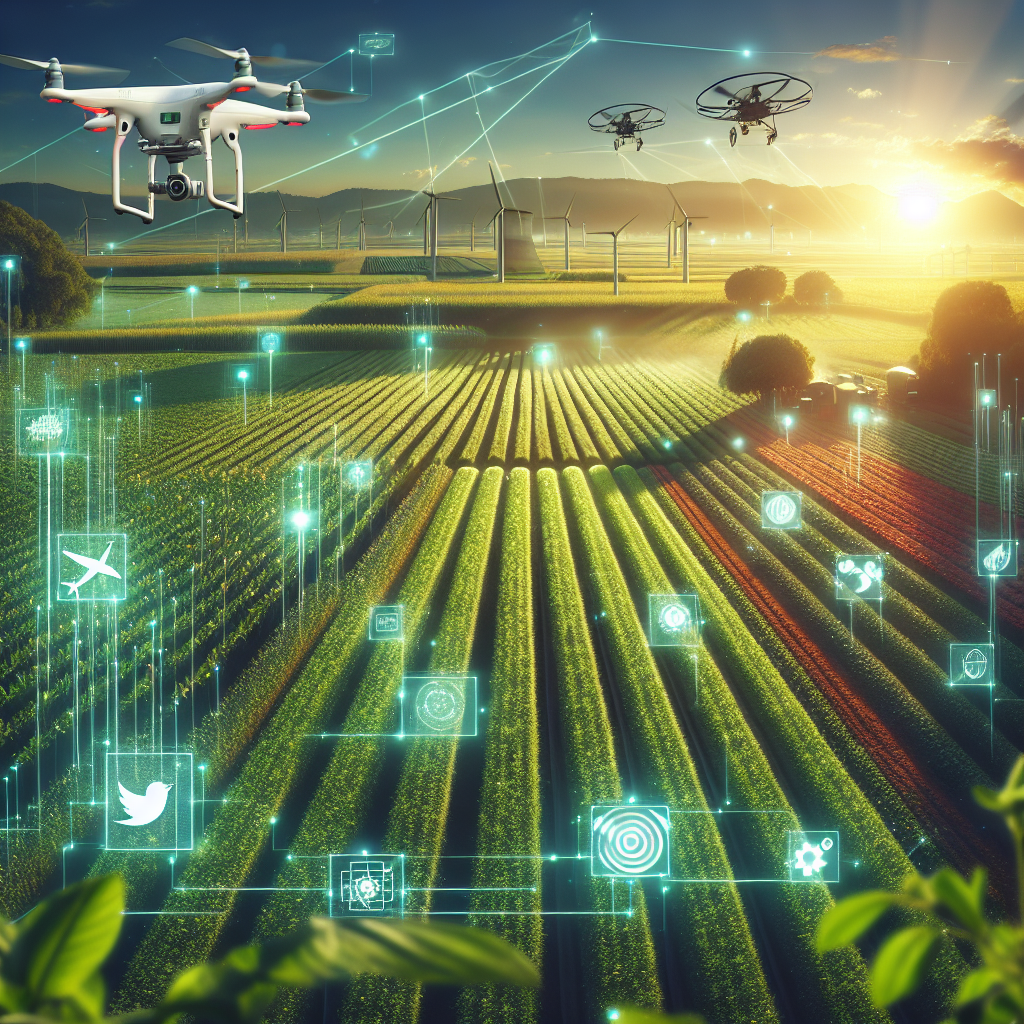Discover Agriculture with Agrawau for a Sustainable Future
In today’s rapidly evolving world, sustainable agriculture practices are more crucial than ever. The concept of agrawau has emerged as a beacon of hope for farmers, agricultural enthusiasts, and eco-conscious consumers. But what exactly is agrawau, and how can it revolutionize the way we approach farming? This comprehensive guide will take you through the ins and outs of agrawau, its benefits, and practical tips for integrating it into your agricultural practices. Whether you’re a seasoned farmer or simply passionate about sustainable living, this post has something valuable for you.
Understanding Agrawau
What is Agrawau?
Agrawau is a holistic approach to agriculture that emphasizes sustainability, biodiversity, and ecological balance. Unlike conventional farming methods that rely heavily on chemical inputs, agrawau practices prioritize natural processes and organic materials. This method not only enhances soil fertility but also promotes healthier crops and livestock.
Historical Background of Agrawau
The concept of agrawau isn’t new; it draws from ancient farming techniques practiced by indigenous communities around the world. These communities understood the importance of working in harmony with nature, a principle that modern agrawau aims to revive. By integrating traditional wisdom with contemporary scientific knowledge, agrawau offers a balanced and effective approach to farming.
The Core Principles of Agrawau
Agrawau is built on several core principles:
- Biodiversity: Promoting a diverse range of plant and animal species to create a resilient ecosystem.
- Sustainability: Ensuring that farming practices do not deplete natural resources or harm the environment.
- Ecological Balance: Maintaining a harmonious relationship between different elements of the farm ecosystem.
These principles guide every aspect of agrawau, from crop selection to pest management, ensuring a holistic and sustainable approach to agriculture.
Benefits of Agrawau
Environmental Benefits
One of the most significant advantages of agrawau is its positive impact on the environment. By reducing the reliance on chemical fertilizers and pesticides, agrawau helps preserve soil health and water quality. Additionally, the emphasis on biodiversity creates a more resilient ecosystem capable of withstanding environmental stresses.
Economic Benefits
Agrawau can also offer substantial economic benefits. While the initial transition may require an investment, the long-term savings on chemical inputs and the potential for higher yields can make agrawau a cost-effective choice. Farmers practicing agrawau often find that their crops are more resilient to pests and diseases, reducing the need for expensive treatments.
Social Benefits
Beyond the environmental and economic advantages, agrawau also promotes social well-being. By fostering community involvement and knowledge sharing, agrawau helps build stronger, more resilient farming communities. The focus on sustainable practices also aligns with the growing consumer demand for ethically produced food, opening up new market opportunities for farmers.

Getting Started with Agrawau
Soil Health and Preparation
The foundation of any successful agrawau practice is healthy soil. Start by conducting a soil test to determine its nutrient levels and pH. Based on the results, you can amend the soil with organic matter, such as compost or green manure, to improve its fertility and structure. Remember, healthy soil is teeming with beneficial microorganisms that play a crucial role in nutrient cycling and disease suppression.
Selecting Crops for Agrawau
Crop selection is a critical aspect of it. Aim for a diverse mix of crops to promote biodiversity and reduce the risk of pest outbreaks. Consider incorporating cover crops and nitrogen-fixing plants into your rotation to enhance soil fertility and structure. Additionally, choose crops that are well-suited to your local climate and soil conditions to maximize their chances of success.
Integrating Livestock
Livestock can play a valuable role in an it system. Animals like chickens, goats, and cattle can help manage weeds, pests, and crop residues, while their manure provides valuable nutrients for the soil. Ensure that your livestock management practices are sustainable and humane, aligning with the core principles of it.
Practical Tips for Implementing Agrawau
Water Management
Effective water management is essential for the success of it. Implement rainwater harvesting systems to capture and store water for irrigation. Use drip irrigation or other water-efficient methods to minimize water waste and ensure that crops receive adequate moisture. Also, consider planting drought-resistant crop varieties to reduce your water needs.
Natural Pest and Weed Control
In it, pest and weed control relies on natural methods rather than chemical inputs. Introduce beneficial insects, such as ladybugs and predatory wasps, to control pest populations. Use cover crops and mulches to suppress weeds and improve soil health. Additionally, consider crop rotation and intercropping to disrupt pest life cycles and reduce the risk of infestations.
Enhancing Biodiversity
Biodiversity is a hallmark of agrawau. Create habitats for beneficial wildlife, such as birdhouses and insect hotels, to attract species that can help control pests and pollinate crops. Plant a variety of crops and native plants to support a diverse range of organisms. Additionally, consider incorporating agroforestry practices, such as planting trees and shrubs alongside crops, to enhance biodiversity and provide additional benefits like shade and windbreaks.
Success Stories of Agrawau
Case Study 1: A Small Farm in the Midwest
One inspiring example of agrawau in action is a small farm in the Midwest. Facing declining soil health and crop yields, the farmers decided to transition to it practices. They began by enhancing their soil with compost and introducing cover crops into their rotation. Over time, they noticed a significant improvement in soil fertility and crop health. Today, the farm is thriving, with higher yields and reduced input costs, thanks to the principles of it.
Case Study 2: A Community Garden in an Urban Area
In an urban community garden, it practices have transformed a neglected plot of land into a vibrant, productive space. By focusing on soil health, biodiversity, and sustainable water management, the garden has become a source of fresh, organic produce for local residents. The project has also fostered a sense of community, with volunteers coming together to learn about and practice it.
Case Study 3: A Large-Scale Organic Farm
Even large-scale farms can benefit from it. One example is an organic farm that transitioned to agrawau practices to enhance sustainability and reduce input costs. By implementing crop rotation, cover cropping, and integrated pest management, the farm has improved soil health, increased yields, and reduced its environmental footprint. The success of this farm demonstrates that it can be scaled up to meet the needs of larger operations.
Overcoming Challenges in Agrawau
Financial Considerations
Transitioning to it can require an initial investment in equipment, training, and inputs. However, the long-term benefits often outweigh these costs. Look for grants, loans, and other funding opportunities to support your transition. Additionally, consider starting small and gradually expanding your it practices as you gain experience and confidence.
Knowledge and Training
One of the biggest challenges in adopting it is acquiring the necessary knowledge and skills. Take advantage of resources such as workshops, online courses, and mentorship programs to build your understanding of it principles and practices. Join local and online communities of like-minded farmers and enthusiasts to share experiences and learn from others.
Adapting to Local Conditions
Every farm is unique, and it practices must be tailored to your specific conditions. Experiment with different crops, techniques, and management strategies to find what works best for your land. Be patient and flexible, and don’t be afraid to make adjustments as needed.
Future Prospects of Agrawau
As the global agricultural landscape continues to evolve, the principles of agrawau offer promising solutions for sustainable farming. With a keen focus on environmental stewardship and resilience, the adoption of it practices can lead to not only healthier soils and biodiversity but also improved food security. The growing awareness of climate change impacts has sparked interest in regenerative agriculture, making it an attractive choice for both new and established farmers looking to adapt.
Innovations in Agrawau
Emerging technologies are also playing a vital role in enhancing the effectiveness of it. Tools such as precision agriculture, which leverages data and automation, can optimise resource use and track the health of crops more efficiently. Additionally, advancements in agroecology, including the development of resilient crop varieties, provide opportunities for farmers to withstand environmental stresses while maintaining productivity. This synergy of traditional practices and modern innovations is paving the way for a sustainable future in agriculture.

The Future of Agrawau
Technological Innovations
The future of agrawau is bright, with technological innovations offering new ways to enhance sustainability and productivity. For example, precision agriculture technologies, such as drones and sensors, can provide real-time data on soil health, crop conditions, and pest populations. These tools can help farmers make more informed decisions and optimize their it practices.
Policy and Advocacy
Support for agrawau is growing at the policy level, with governments and organizations recognizing the importance of sustainable agriculture. Advocate for policies that promote it practices, such as funding for research and education, subsidies for organic inputs, and incentives for biodiversity conservation. By working together, we can create a supportive environment for it to thrive.
Consumer Demand
Consumer demand for sustainably produced food is on the rise, and it can help meet this demand. Educate consumers about the benefits of it and promote your products as environmentally friendly and ethically produced. By connecting with eco-conscious consumers, you can build a loyal customer base and drive demand for agrawau products.
Conclusion
Agrawau offers a promising path forward for sustainable agriculture. By focusing on biodiversity, sustainability, and ecological balance, it can help farmers achieve higher yields, lower costs, and a smaller environmental footprint. Whether you’re a farmer looking to transition to more sustainable practices or an eco-conscious consumer interested in supporting sustainable agriculture, it has something to offer.
Ready to take the next step? Explore more resources, connect with it communities, and start implementing it practices on your farm. Together, we can create a more sustainable and resilient future for agriculture.














Post Comment